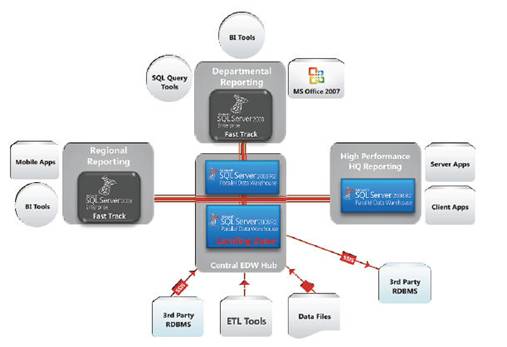Sai Sireesh: Get Ready for Stress Testing using Massively Parallel Processing (MPP) Architecture!
Risk Managers are going to be busy with the fresh wave of stress testing requirements. Most financial institutions I have dealt with have an enterprise Risk EDW (datawarehouse) ranging a few terabytes (TB) to hundreds of terabytes for their banking book and/or trading book positions. Typically with the data volumes growing dramatically, ever so frequently the Risk Managers get a double whammy - 1. Increased cost per terabyte of data 2. Decreased Performance. More so with the renewed focus on stress testing by regulators.
Ta da! Comes along newly launched Microsoft SQL Server 2008 R2 Parallel Data Warehouse - a highly scalable data warehouse appliance that delivers performance at low cost through a massively parallel processing (MPP) architecture. The MPP architecture helps enable better scalability, better and more predictable performance, reduced risk and a lower cost per terabyte than other data warehouse solutions.
This is the evolution of the data warehouse appliance created by DATAllegro, acquired by Microsoft, and uses MPP to deliver the high performance and scalability on SQL Server 2008, Windows Server® 2008 and industry-standard hardware.
 Improve performance at a lower price per terabyte
Improve performance at a lower price per terabyte
In a traditional, symmetric multi-processing (SMP) architecture, query processing occurs entirely within one physical instance of a database. CPU, memory, and storage impose physical limits on speed and scale. A Parallel Data Warehouse MPP appliance partitions large tables across multiple physical nodes, each node having dedicated CPU, memory, and storage, and each running its own instance of SQL Server, in a parallel nothing-shared design. All components are balanced against each other to reduce performance bottlenecks, and all server and storage components are mirrored for enterprise-class redundancy.
This MPP architecture can cost less because, rather than relying on expensive proprietary processors or storage, Parallel Data Warehouse appliances use industry-standard hardware. As data volumes grow, scalability simply requires the addition of capacity to the appliance. There is no need for a “forklift upgrade,” where the entire appliance must be upgraded.
Other benefits being:
1. As a platform for high-scale data warehouses from terabytes to more than 100 terabytes.
2. Redeploy what you have - Existing SMP data marts can be redeployed and “plugged in” to the MPP cluster as spokes, receiving data from the MPP hub.
3. Carefully balanced, pre-assembled hardware and software from leading hardware vendors significantly accelerate your time to value and reduce deployment costs.
4. Deliver predictable performance
5. As the hub of a hub-and-spoke EDW.
6. To offload applications from an EDW for high-speed aggregation and queries.
7. As long-term data storage in multi-tier data warehouses.
8. As a subject-oriented data mart or sandbox for new analytic applications.
Interested? Find out more below to prepare for fresh wave of stress testing!
https://www.microsoft.com/sqlserver/2008/en/us/parallel-data-warehouse.aspx